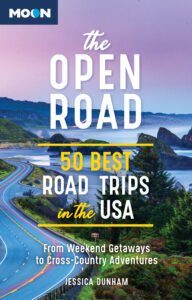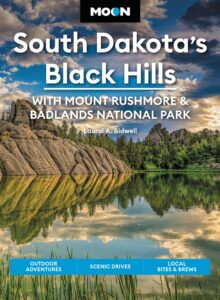Oberlin to the Chalk Pyramids
Oberlin
All across northwest Kansas, US-83 sweeps across beautiful rolling farmlands, paralleling railroad tracks and passing through low one-horse towns with towering feed elevators. Funky little Oberlin, (pop. 1725) about 12 mi (19.3 km) south of the Nebraska state line, is definitely worth a stop. It’s a picture-postcard town, with a Social Realist native limestone statue of a pioneering family marking its northern edge and a mini movie theater called the Sunflower Cinema (220 N. Penn Ave., 785/470-2200)—in honor of the Kansas state flower—playing Hollywood hits amid awning-covered storefronts along the two blocks of redbrick downtown streets.
The peace and quiet of today’s Oberlin is in stark contrast to its past: Oberlin was the site of the last Indian raid in Kansas on September 30, 1878, after a fierce skirmish had erupted between Chief Dull Knife’s Northern Cheyenne, heading to regain their lands in the Dakotas, and an infantry contingent from Fort Dodge at what is today Lake Scott State Park, near Scott City, 95 mi (153 km) to the south. The Oberlin cemetery contains a memorial to the 19 settlers who were killed in the Cheyenne attacks.
Oakley
Oakley (pop. 2,108), south and west of I-70 and lined up along historic US-40, is an old big-time ranching and railroad town, featuring lots of utilitarian architecture, massive diesel engines, farm supply stores, and railroad tracks. The big event here, the Fick Fossil and History Museum (700 W. 3rd St., 785/671-4839, Mon.-Sat., free), just off US-83, features yet more unique exhibits: more than 10,000 fossilized shark teeth, a sod house, and some garish mosaics, including the Great Seal of the President of the United States, made entirely out of the aforementioned shark’s teeth. It was created by—who else?—Vi Fick. The local history and paleontology exhibits are quite good too.
The I-70 Business Loop (old US-40) offers the usual array of cafés and motels.
Chalk Pyramids/Monument Rocks
South of Oakley, the road bolts straight for over 20 mi (32 km), passing between an enormous sea of yellow flowers (in early summer) on one side and expanses of open range on the other. Later, the scenery peters out into a prickly, dry, faintly yellow rocky desolation that signals the fringes of the Smoky Hills region.
The prime topographical feature of the Smoky Hills is the surreal Chalk Pyramids, also known as Monument Rocks; they are referred to in the old WPA Guide to Kansas as the “Kansas Pyramids.” Whatever you call them, these highly eroded geological formations, which reach heights of 70 ft (21.3 m) above the plains, are composed of layers of ancient seabed from the Cretaceous period and were originally formed 80 million years ago. The impressive spires, karst-like formations, and shale cliffs farther on have yielded thousands of excellent fossils of sharks, shark teeth, fish, and reptiles. Although the pyramids are on private land, access is not restricted, but there are no facilities. To get there from Oakley, drive 20 mi (32 km) south on US-83, then east for 4 mi (6.4 km) on Jayhawk Road, around 3 mi (4.8 km) south on Gove 14, and another mile (1.6 km) east on Gove 16. From Scott City, drive 18 mi (29 km) north, turn east on Dakota Road, and zigzag east and north for around 9 mi (14.5 km). Don’t go in wet weather, however, or you’ll get stuck in the mud, and you could be there for some time.
You can get some good maps and directions at the friendly Keystone Gallery (620/872-2762), “conveniently located in the middle of nowhere,” midway between Oakley and Scott City along US-83; the gallery also has a display of fossils, and you can enjoy a sampling of local art and sculpture as well.
Related Travel Guides for the Road to Nowhere
Travel Map of the Road to Nowhere through Kansas
















